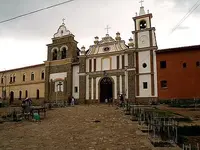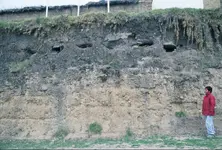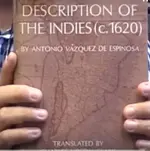Hello Marius's
I love all these yarns and the story is favorite of mine. But it easy to see people become to obsessed with the story.
The trio researched this topic and went places and archives book and journal you do not know even exist. Crow and another that used to post on Tnet to their credit absolutely smashing it. In fact Crow said to me he half wanted the story to be real but the truth was screaming out saying other wise. They went through hundreds of documents. Crow found in Tarata in the convent the real documents.

Not the crap written in every treasure hunting books posted on the topic year after year.
You cannot take Prodgers version word for word either. In regards to Ampuera he was not as old as prodgers made out to be. We have his birth records and in fact he did live in Cutti which is nearby. This was the estancia (cattle ranch) that 2 brothers that used to supply food to mining settlements and mines along Sacambaya river collectively known as Mines des Santiago. After the mines gave out and miners moved on and Pazula was abandoned like many areas of Bolivia. The estancia had no market for their produce. So the brothers gave it to the Jesuits of the collage of Ouro. After the expulsion the Templadors the estate was worth 6500 pesos. However the ranch was too remote away from potential markets and no one wanted to buy it. Eventually the abandoned ranch estate was taken over by Ampuera family and to their credit being full blooded native Bolivian and not a mixed breed, establish a successful cattle ranch. by the 1860's / 1870's the president Melgarejo who was half breed himself hated the native people and when in power stole from the native peoples such as Ampuera, even ones doing good for themselves. So its no wonder Ampuera never showed Melgarejo anything.
It is interesting to note Cutti was never a priory but ruined ranch that was left to the Jesuits. The chapel there was built by Ampuera in 1900. In fact descendants of his still live there. While Ampuera did recover treasure from Sacambaya. It was never Jesuit. In fact he was looting Inca graves along the river yielded small gold ornaments and pottery. Such as these looted pit tombs below.

In 1912 Prodgers tried to promote another expedition there was many exaggerations in his book with Sir Arthur Ormsby a backer who went broke. He exaggerated especially the size of the alleged treasure and the real details. Prodger had taken a very rough translation from the document Corina San Roman presented him. Sanders later went one better just completely BS everything.

Here is the Real version "Corina San Roman had" Directions created by Juan Bautista Saavedra in the mid 1860's to scam money from incompetent fool of president Melgarejo.
Discharge of conscience by the Convent of Sacambaya - Reverend Father Commander of the Society of Jesus and Conqueror of the 32 peoples of Moxos, by the Royal Audience our Politi-chario of Charcas, by the grace of God.
Fray Diego de Olivar, resident in the Vera River Sacambaya, understanding of Ayopaya, declares in the last hour of agony and says: That the same year of 1767, a Pontifical Decree, Clemente Sanjuanete, was issued for the expulsion of the Jesuits from all the communities of America, which was August 18 at one o'clock in the afternoon, so that we would be sent barefoot to an island in Rome, from where I went astray, ensuring all the flow in the same convent.
Seven brothers marched and were hanged in Rome, who belonged to the Martinez choir, for innocents; from where I confess: in the chapel on the right, there are five golden cups, worked by my own hands, further inside, in the sacristy, there is a large cup, with three belts of iron cinchones at three shafts of depth, where Two sacred glasses of the convent are deposited and eighty thousand in white currency.
The gold in pips was collected from Valle Alto, where we had to found a city, for its good climate and its plain, the names put by us, in the side there must be a hill called Tutinqui, where it climbs everywhere, in the tip will be a large pampichuela in the shape of a square, where gold and chafalonia were covered. Further down, it will be transformed on the east side, where you will find a stone or large door that will not collapse in a thousand years, because it is covered with a large stone inside, where you will find a portion of bones, where there is stone, he will lie down inwards, there he will find five thousand quintals quintals of gold (5,500 qq.) and the greatness that God placed on earth.
What I want you to enjoy in my name and remember with a Mass to San Gregorio and the other brothers who were hanged in Rome.
I express in defense of conscience, their names that follow me, Fray Diego de Olivar, Fray Gregorio Valdez, Fray Pedro Cuvay, Martínez Orbasi, Fray Agustín Oliva, Fray Runualdo Peña Soliz, Fray Carlos Bascopé and Fray Parisimo Buchini.
This letter that was copied several times, has some faults in its grammatical construction or was always so for the circumstances in which it was dictated. As you can see for yourself Prodgers and Sanders later version just added added to the bull crap. Ampuera, has a hand written copy given to him by Prodgers which is still in his descendants possession.
The hill called Tutinqui, is what is referred to as Caballo Cuno" Or As Prodgers politely referred to it as Caballo Cunoco"
There was a lost mine connected to Sacambaya story that is virtually unknown outside of Bolivia.
I have more to show you but I am very time poor at present.
kanacki











